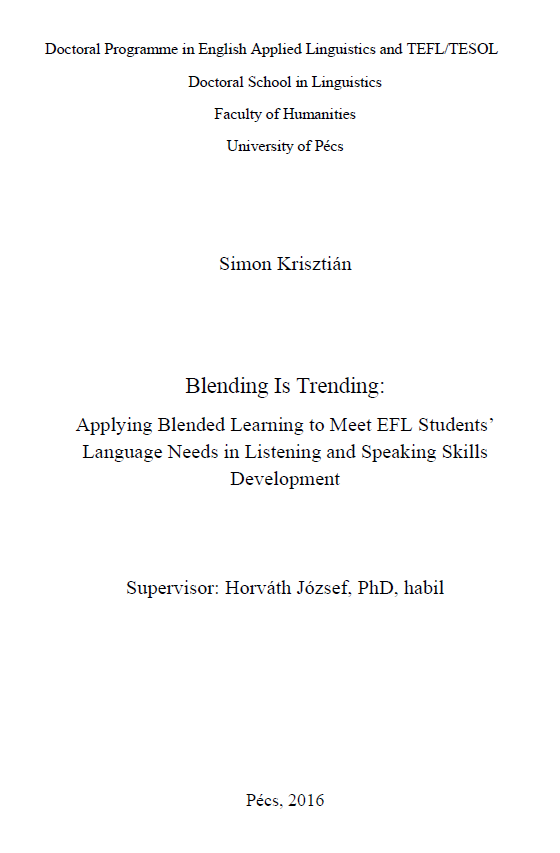Blending is Trending: Applying Blended Learning to Meet EFL Students’ Language Needs in Listening and Speaking Skills Development
Abstract
The dissertation aims to establish a solution for university-level listening and speaking
skill development courses that is compatible with students’ expectation of e-learning
and the developing international trends. Blended learning was the guiding frame for my
studies. The underlying reason for this can be found in the core concept of blending: a
combination of face-to-face and online elements.
The dissertation presents six studies that apply quantitative, qualitative and
mixed methods to identify key areas in blended delivery on the teacher and learner sides
as well. Two groups of BA students (N=36) and a number of tutors (N=6) participated
in the studies at the Institute of English Studies at the University of Pécs. The studies
were conducted between the 2014/2015 spring and 2015/2016 fall semesters. With such
a limited sample, the findings cannot be generalized on larger scales; however, they
represent applicable results in the context where they were carried out.
Identifying blending possibilities was structured around the phases of
exploration, application and evaluation with two studies in each stage. To properly
design an appropriate blended learning frame for the Listening and Speaking Skills
(LSS) courses, the studies followed a piloting-application design. Study 1 explored
blending possibilities in the LSSII seminar and assessed student satisfaction, which was
applied in the design of Study 5 for LSSI. Online vocabulary testing was piloted in
Study 2 and Study 4, building on the results, presented a way for structured online
vocabulary instruction, practice and testing. Study 3 analyzed teachers’ responses in
structured interviews concerning their first blended courses. Study 6 compared how
tutors’ views in Study 3 correspond with another teacher’s blended correspondence
course design.
The studies have revealed key aspects and possibilities of blended applications
in the full time and correspondence programs. The findings have been used to redesign
the Listening and Speaking Skills I and II courses to simultaneously provide scaffolding
for students’ language and digital development. Based on the results, blending has been
shown to offer relevant solutions in both programs as the combination of face-to-face
and online elements allows for flexible teaching approaches concerning in- and out-ofclass
settings.

